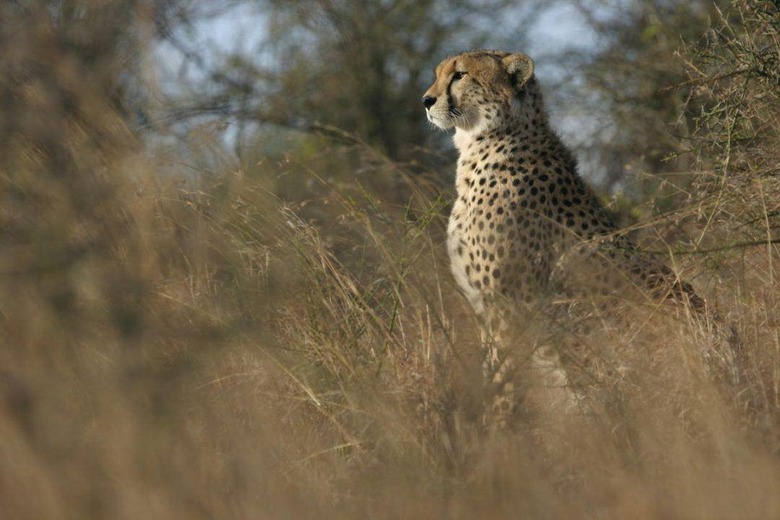Cheetahs Are Closer To Extinction Than Anyone Knew
A mere 7,100 cheetahs remain the wild, a new study has confirmed, putting the wild cats perilously close to extinction and spurring demands that they be officially classed as "endangered". The striking big cats, which hold the record as the world's fastest land animal, are currently considered "vulnerable" on the IUCN Red List of Threatened Species. That, the authors of a new study insist, paints the actual situation in too rosy a way.
According to the research, led by ZSL (Zoological Society of London), Wildlife Conservation Society (WCS), and Panthera, some pockets of cheetah species are down to just fifty animals. Their report, published in the Proceedings of the National Academy of Sciences, puts no small degree of blame on the dwindling territories the cheetahs have left, which have been encroached upon by man. Indeed, the researchers highlight, more than three-quarters of the cheetah's habitat falls outside of current protected areas.
Actually coming up with a precise count of how many of the cats remain has been a persistent challenge. Cheetahs are notoriously shy, and traditional methods of tracking them have struggled to get anywhere near an accurate number. Even though some protected territories already exist, the wide-ranging tendencies of the cheetahs suggest they're hopelessly inadequate.
"This study represents the most comprehensive analysis of cheetah status to date," Dr Sarah Durant, ZSL/WCS lead author and Project Leader for the Rangewide Conservation Program for Cheetah and African Wild Dog, said of the research. "Given the secretive nature of this elusive cat, it has been difficult to gather hard information on the species, leading to its plight being overlooked."
In Zimbabwe, for instance, estimates suggested 1,200 cheetahs were still alive sixteen years ago. That number has fallen to 170 at most today. Asiatic cheetah populations have shrunk to less than 50 of the cats.

Dr Durant and her team is now calling for a priority upgrade of the cheetah's Threatened Species classification. "Typically, greater international conservation support, prioritization and attention are granted to wildlife classified as 'Endangered'," the group says, "in efforts to stave off impending extinction." Without that, they warn, "it is likely to be much more vulnerable to extinction than was previously thought."
Of course, the animals' rarity has in some ways only hastened its decline. Cheetahs are in demand as live, exotic pets, while illegal trafficking of cheetah parts has also hit numbers. Those that survive have seen their prey over-hunted by humans.
In an attempt to better monitor numbers, the Cheetah and Wild Dog project has released iNaturalist for iPhone and Android. That works as a crowdsourced spotting system, recording sightings of the two species; already, flags from ten African range states have been recorded, both by field project workers and tourists visiting the national parks. Nonetheless, more is needed than just more accurate counts if the decline is to be arrested and, hopefully, reversed.
"We've just hit the reset button in our understanding of how close cheetahs are to extinction," Dr Kim Young-Overton, Panthera's Cheetah Program Director said of the new research. "The take-away from this pinnacle study is that securing protected areas alone is not enough. We must think bigger, conserving across the mosaic of protected and unprotected landscapes that these far-ranging cats inhabit, if we are to avert the otherwise certain loss of the cheetah forever."
MORE iNaturalist
IMAGE Rangewide Conservation Program for Cheetah and African Wild Dog; ZSL
